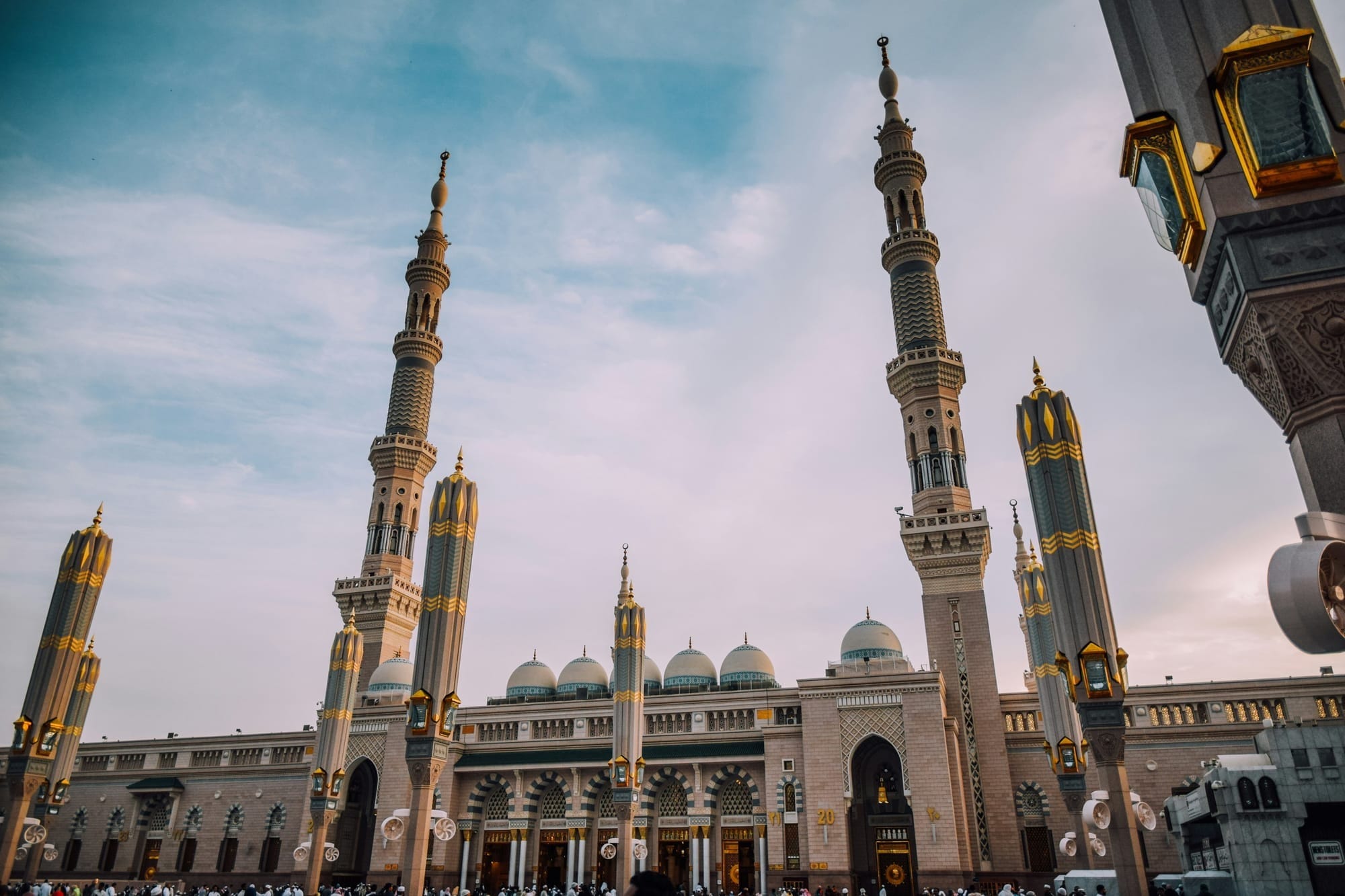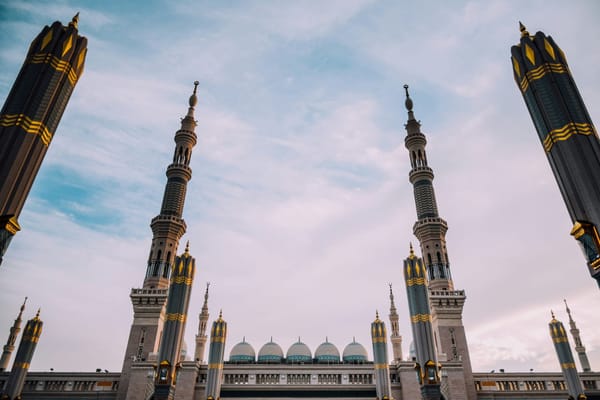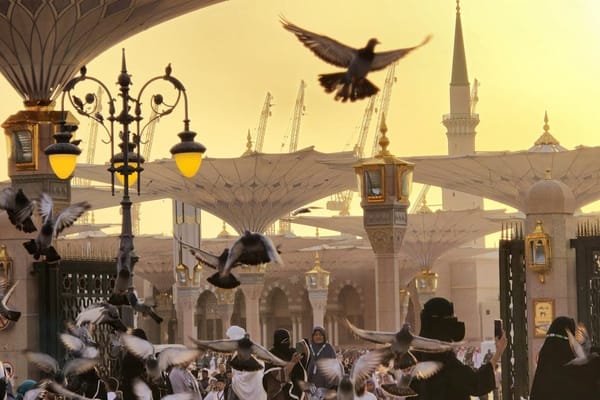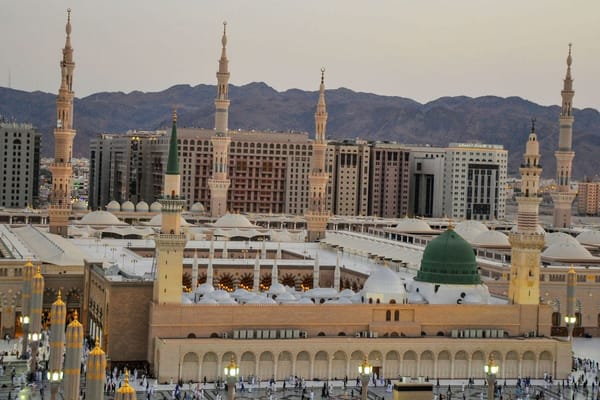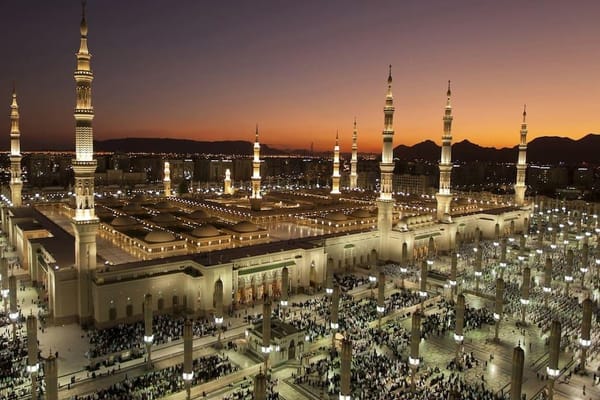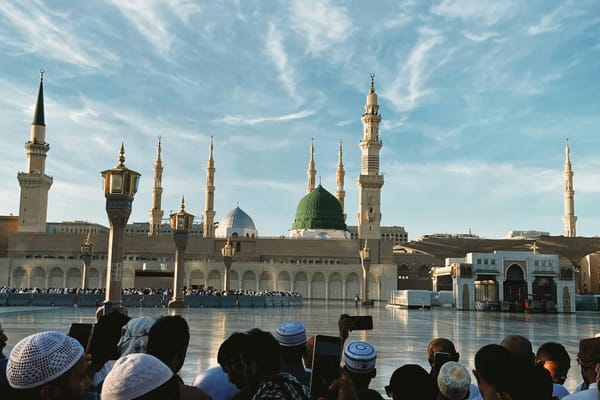Masjid al-Nabawi, or the Prophet’s Mosque, is one of the most special places you can visit in the Islamic world. Located in the heart of Madinah, Saudi Arabia, it was built by Prophet Muhammad (ﷺ) himself in 622 CE, right after his migration from Makkah. Today, it’s known as the second holiest site in Islam, after Masjid al-Haram in Makkah. What started as a simple, open space has grown into a breathtaking mosque that can welcome over a million people at once. Whether you're visiting for prayer, reflection, or just to be near the resting place of the Prophet (ﷺ), being here is an experience that stays with you.
What Is the Historical Significance of Masjid al-Nabawi?
Upon his migration (Hijrah) from Makkah to Madinah, Prophet Muhammad (ﷺ) purchased a plot of land to construct a mosque that would serve as a community center, court, and religious school. The original structure was a simple, open-air building made of palm trunks and mud walls. Over time, it underwent numerous expansions and renovations to accommodate the growing Muslim community. One of the most significant expansions occurred during the reign of Caliph Al-Walid I, who incorporated the tombs of Prophet Muhammad (ﷺ) and the first two caliphs, Abu Bakr and Umar, into the mosque's precincts. This inclusion marked the beginning of the mosque's evolution into a pilgrimage site for Muslims worldwide.
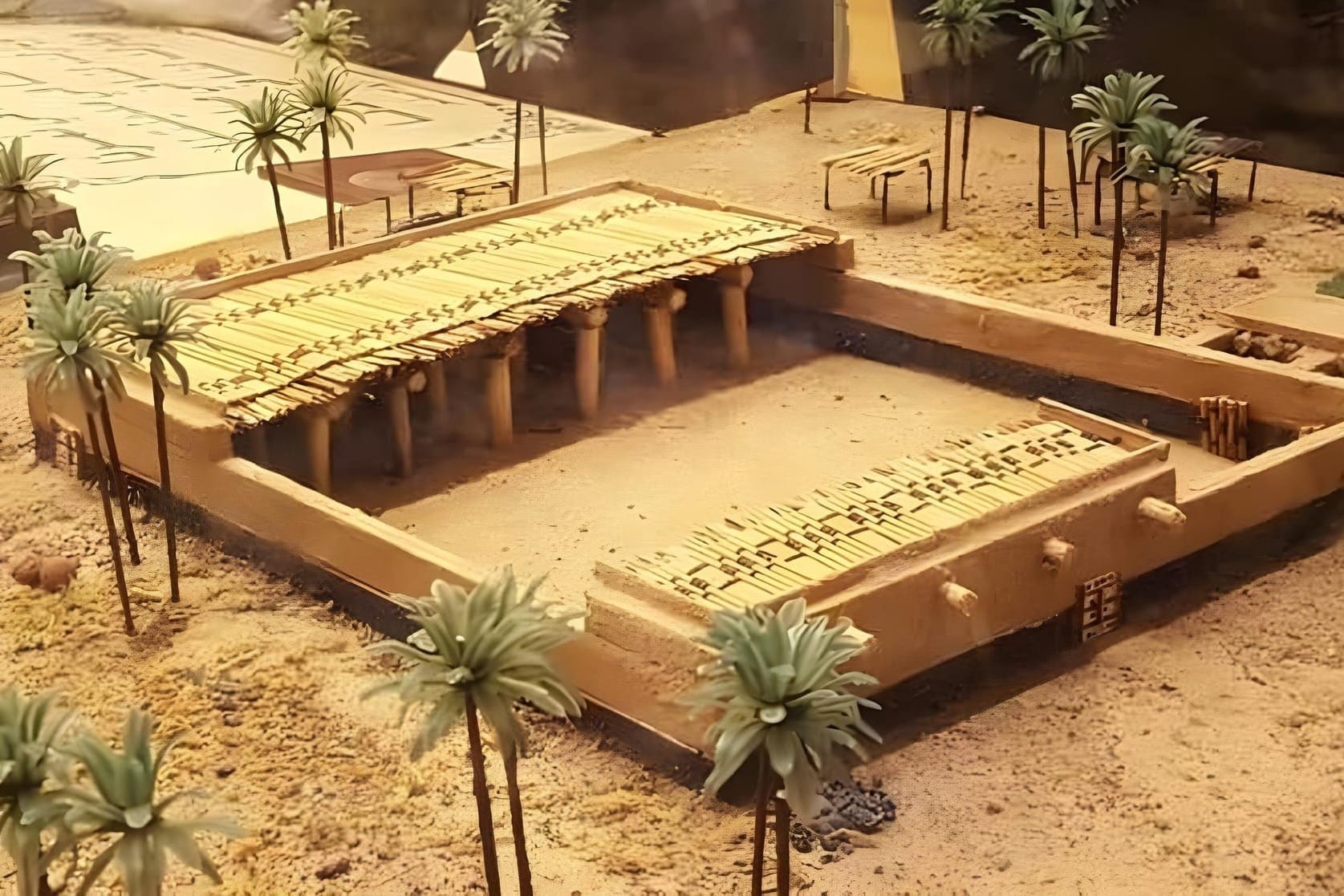
What Are the Architectural Features of Masjid al-Nabawi?
Al-Nabawi Mosque's architecture reflects a blend of various Islamic styles accumulated over centuries. The mosque now features a rectangular design spanning two levels, with the Ottoman prayer hall extending to the south. The main prayer hall occupies the entire first floor, and the mosque's enclosure is approximately 100 times larger than the original structure, capable of accommodating over a million worshippers.
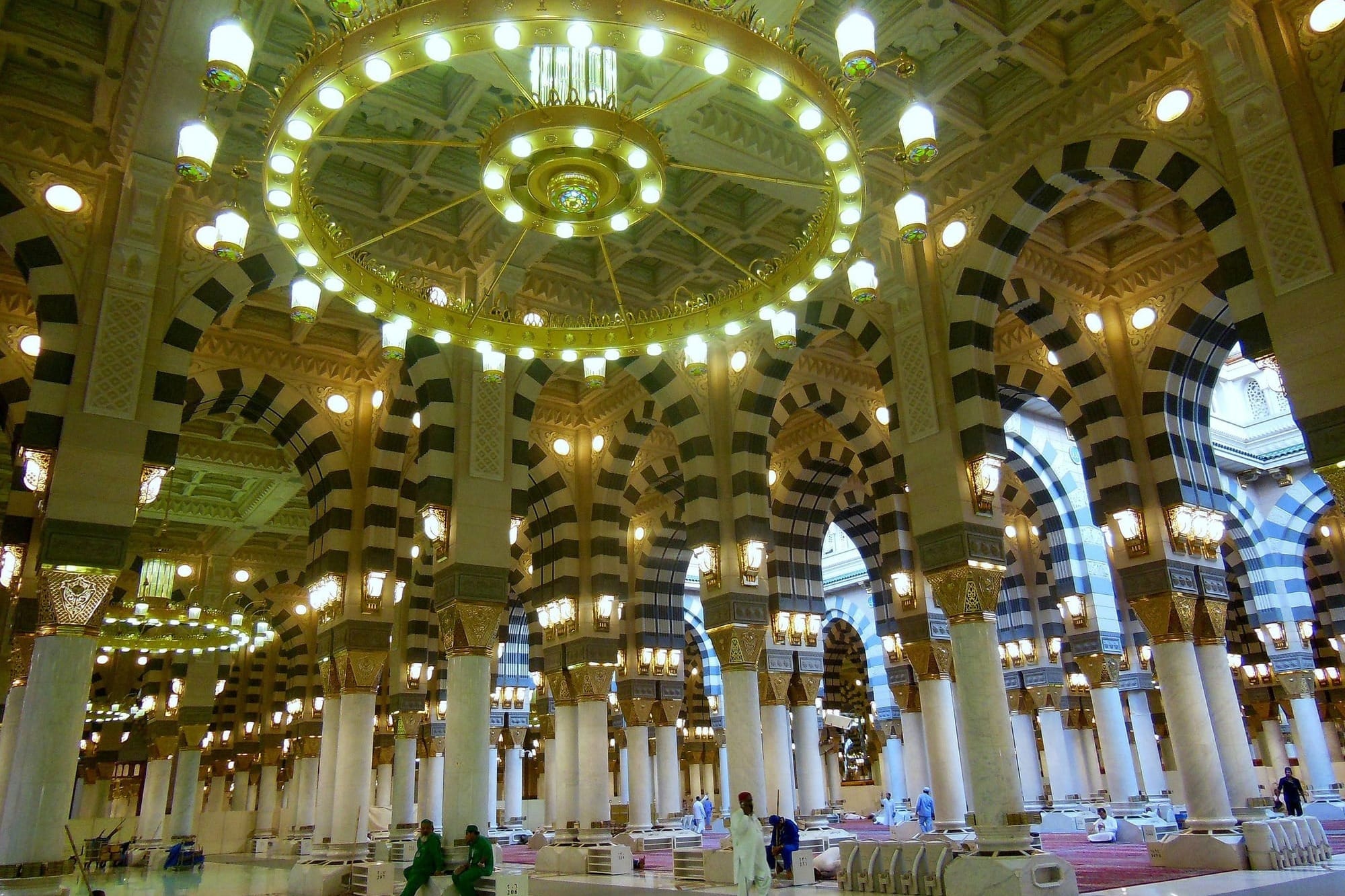
The Green Dome: Icon of Masjid al-Nabawi
Among the many breathtaking features of Masjid al-Nabawi, the Green Dome stands as its most iconic and emotionally resonant symbol. Visible from various points across Madinah, this vibrant green structure rises above the sacred chamber that holds the tomb of Prophet Muhammad (ﷺ), as well as the graves of the first two caliphs—Abu Bakr al-Siddiq and Umar ibn al-Khattab.
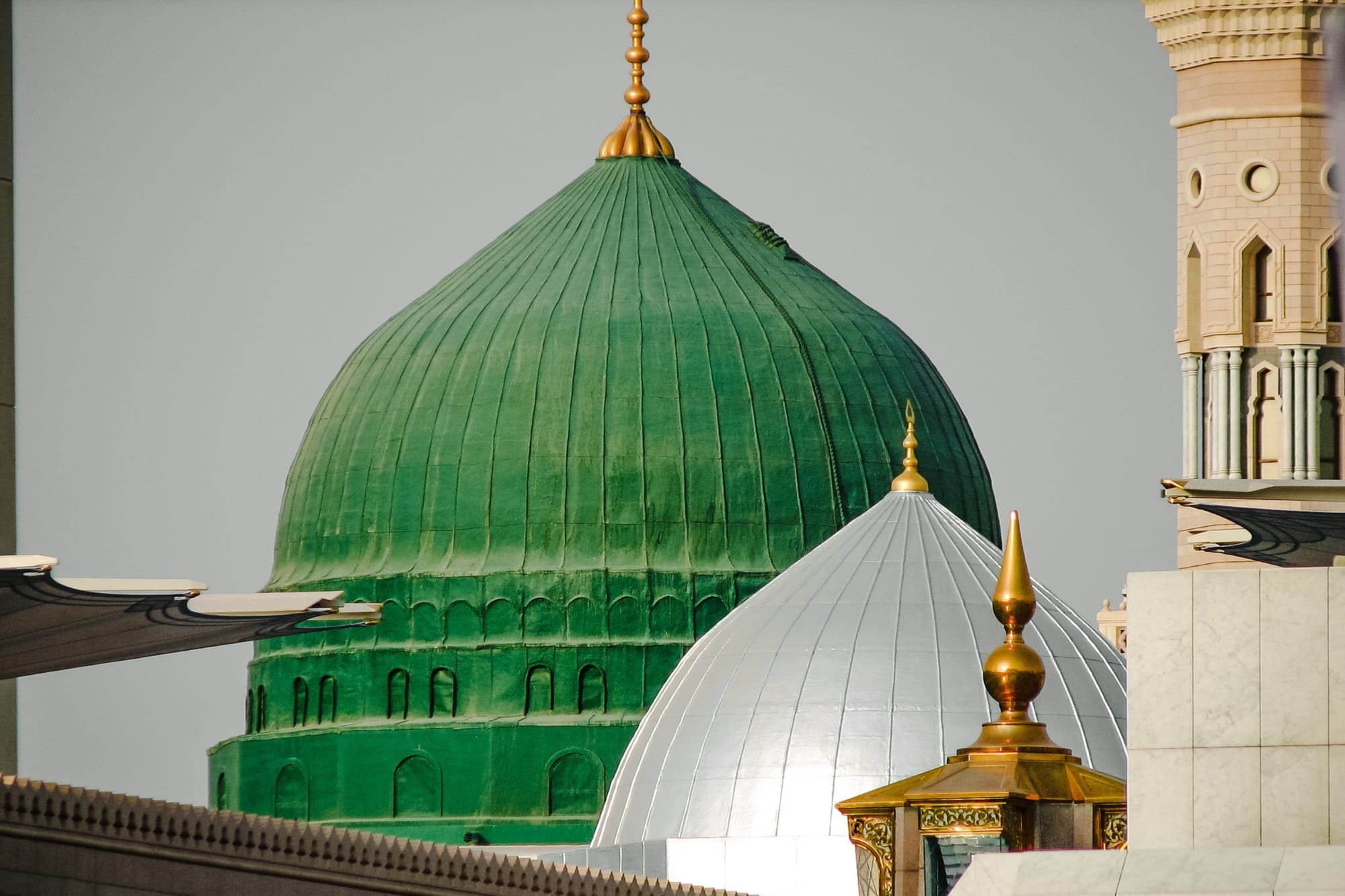
How Did the Green Dome Come to Be?
The dome we see today is the result of centuries of architectural evolution. Originally, when the Prophet (ﷺ) was buried in his home—adjacent to the first mosque he built—there was no dome. The home of Aisha (RA), where he passed away, simply blended into the mosque’s layout.
- 1279 CE (678 AH): During the Mamluk Sultanate, under Sultan Al-Mansur Qalawun, a wooden dome was constructed over the sacred chamber. This marked the first significant architectural enclosure above the Prophet’s grave.
- 1817 CE: The dome was rebuilt and reinforced with stone during the Ottoman era by Sultan Mahmud II, and eventually painted green—thus giving it the name it’s known by today.
- 1837 CE: The dome received its final green color, which has become an enduring symbol of Islamic architecture and reverence.
Today, the Green Dome is not just an architectural feature—it's an emblem of love and respect that Muslims around the world associate with the life and legacy of Prophet Muhammad (ﷺ).
Who Is Buried in the Green Dome?
Beneath the iconic Green Dome of Masjid un-Nabawi lies the sacred chamber where Prophet Muhammad (ﷺ) is buried, alongside his two closest companions and the first two caliphs of Islam—Abu Bakr al-Siddiq (RA) and Umar ibn al-Khattab (RA). This area, known as Al-Hujrah al-Nabawiyyah, was originally the home of Aisha (RA), the Prophet’s wife, and remains one of the most revered places in Islam.
The Courtyard of Prophet’s Mosque
The mosque boasts ten minarets, each approximately 105 meters tall, exemplifying classic Islamic architectural elements. The expansive courtyards are equipped with large retractable umbrellas that provide shade to worshippers, enhancing comfort during prayers.
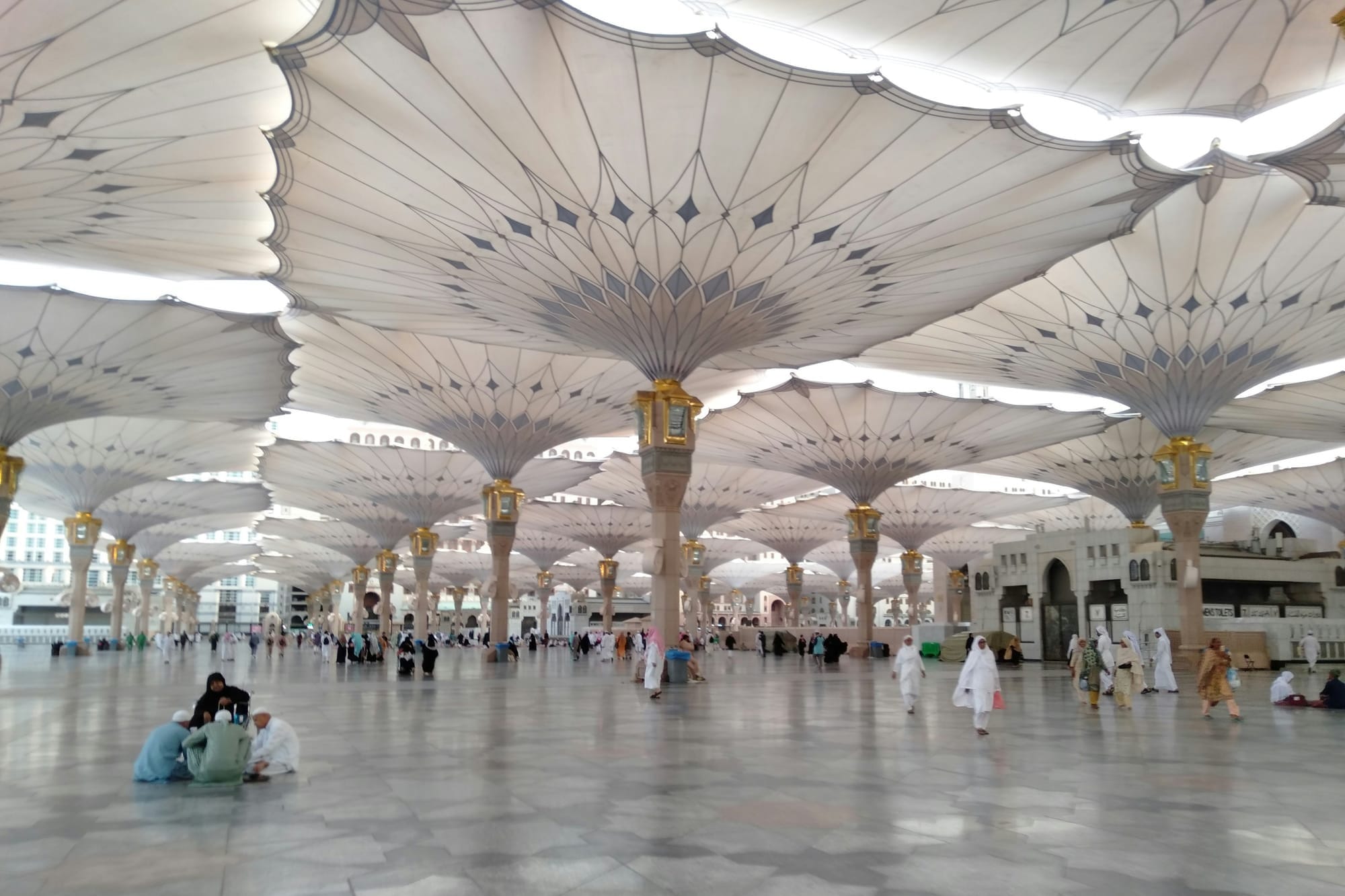
The iconic umbrellas at Masjid al-Nabawi open at sunrise and close before sunset—a peaceful and stunning sight worth catching.
What Is the Spiritual Significance of Masjid al-Nabawi?
Masjid al-Nabawi holds profound spiritual importance for Muslims. It is a cherished tradition for pilgrims performing Hajj or Umrah to visit the mosque, offering prayers and paying their respects at the tomb of Prophet Muhammad (ﷺ), who rests within the mosque’s sacred chamber. While visiting the Prophet’s Mosque is not a compulsory part of Hajj or Umrah, it is a Sunnah that carries immense reward and emotional significance. For many believers, this moment—standing near the final resting place of the Prophet (ﷺ)—is the highlight of their entire spiritual journey.
Many choose to sit quietly in reflection, recite Qur’an, or send salutations (salawat) upon the Prophet (ﷺ). The act of visiting and saying salam is a beautiful Sunnah that the Prophet himself encouraged.
Rawdah Access: Gate Numbers and Entry Guidelines
The mosque operates 24 hours a day, making it accessible at any time for worshippers seeking peace, connection, or simply a place to pause and reflect. From the early hours of Fajr to the stillness of the night after Isha, every moment spent inside Al Nabawi Masjid is spiritually charged. Visitors often note the sense of calm that blankets the mosque, especially in the Rawdah, where it is said;
“Between my house and my pulpit is a garden from the gardens of Paradise.” (Bukhari)
How to Access the Rawdah (For Men and Women)
To maintain order and provide a peaceful atmosphere, Masjid al-Nabawi has separate entrance and exit gates for men and women visiting the Rawdah:
🕌 For Men
- Entrance Gate: Gate 38
- Exit Gate: Gate 2
🕌 For Women
- Entrance Gate: Gate 37
- Exit Gate: Gate 38
For visitors heading to the mosque—especially those planning to visit the Rawdah area—the Hop-On Hop-Off sightseeing bus in Madinah includes a convenient stop near Al Salam Gate, one of the main entrances to Masjid al-Nabawi. This makes access to the mosque simple and stress-free. It’s a flexible and scenic option, ideal for those exploring multiple sites around the city or staying a bit farther away.
What Are the Visiting Hours for Masjid al-Nabawi?
Masjid al-Nabawi is open 24 hours a day, seven days a week, allowing worshippers and visitors to engage in prayers and reflection at any time.
What Is the Dress Code for Visitors?
When visiting Masjid al-Nabawi, it is essential to observe proper etiquette to maintain the sanctity of the mosque:
- Modest Dress: Both men and women should wear modest clothing. Women are required to cover their hair, and attire should cover arms and legs.
- Footwear: Shoes must be removed before entering the mosque. Designated racks are available for storage.
- Conduct: Maintain a respectful and quiet demeanor. Loud conversations and disruptive behavior are discouraged.
What Are the Guidelines for Photography Inside the Mosque?
To preserve the sanctity of Masjid al-Nabawi, the Saudi authorities have implemented regulations regarding photography. Visitors are advised to refrain from taking photographs or selfies within the mosque premises, especially during prayer times, to avoid causing inconvenience to other worshippers. This directive aims to maintain the spiritual atmosphere and respect the privacy of individuals engaged in worship.
Final Tips for Visiting Masjid al-Nabawi
Whether you're planning your first visit or returning for a spiritual retreat, Masjid al-Nabawi offers a deeply enriching experience. To make the most of your time there, keep these tips in mind:
- Download the Nusuk App: Required for booking your visit to the Rawdah and other holy sites. It also provides up-to-date information on prayer times and capacity.
- Best Times to Visit: For a quieter experience, aim to visit just after Fajr or during mid-morning on weekdays. Fridays and evenings tend to be busier.
- Stay Nearby: Madinah has a wide range of hotels just steps away from the mosque. Staying close allows you to easily join all five daily prayers and avoid transportation hassles.
- Hydration and Comfort: The climate in Madinah can be hot and dry. Bring a refillable water bottle and wear breathable fabrics.
- Hop on the sightseeing bus: Stops near Masjid al-Nabawi and other key ziyarat landmarks in Madinah—perfect for getting around without hassle.
Above all, remember that a visit to Masjid al-Nabawi is a chance to deepen your connection to the Prophet (ﷺ), seek inner peace, and reflect on the spiritual journey of a lifetime.
May your visit be filled with peace and blessings!

